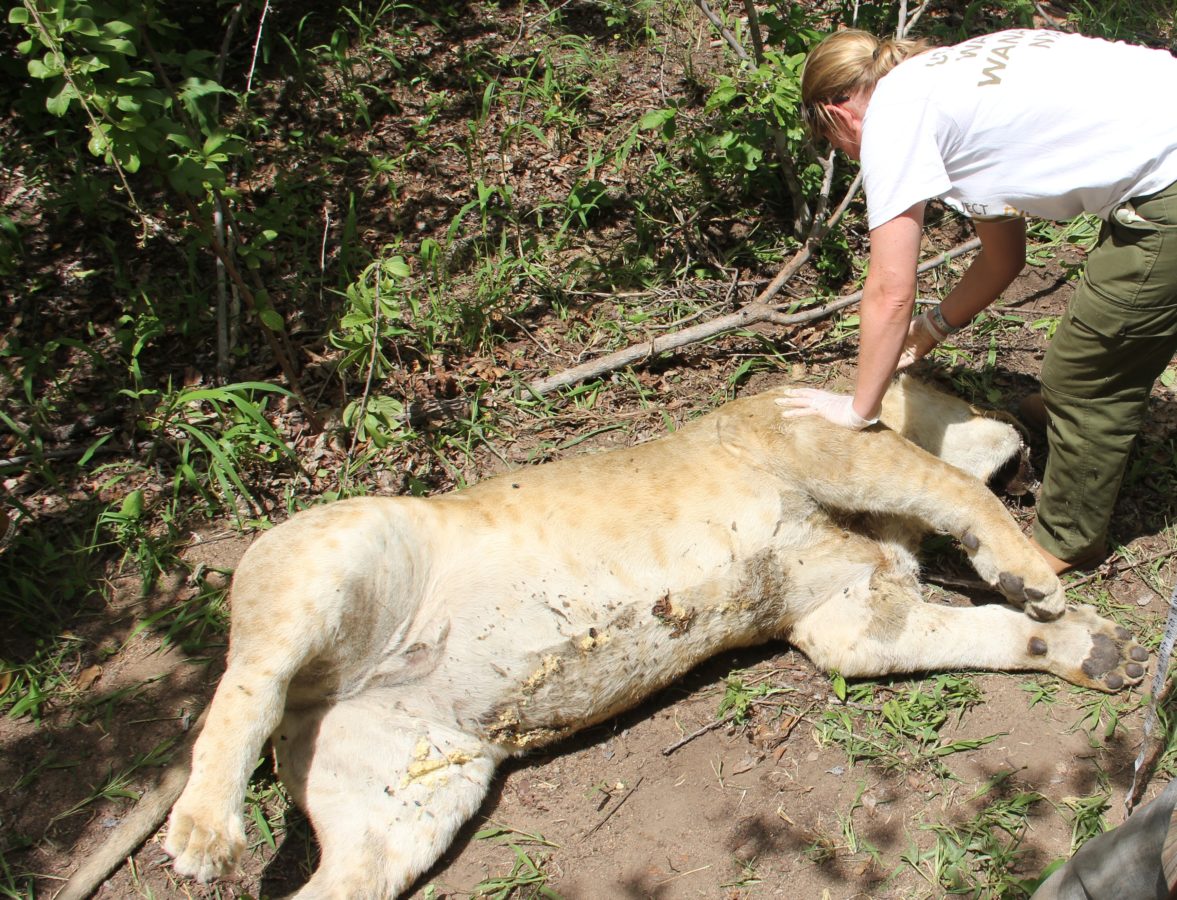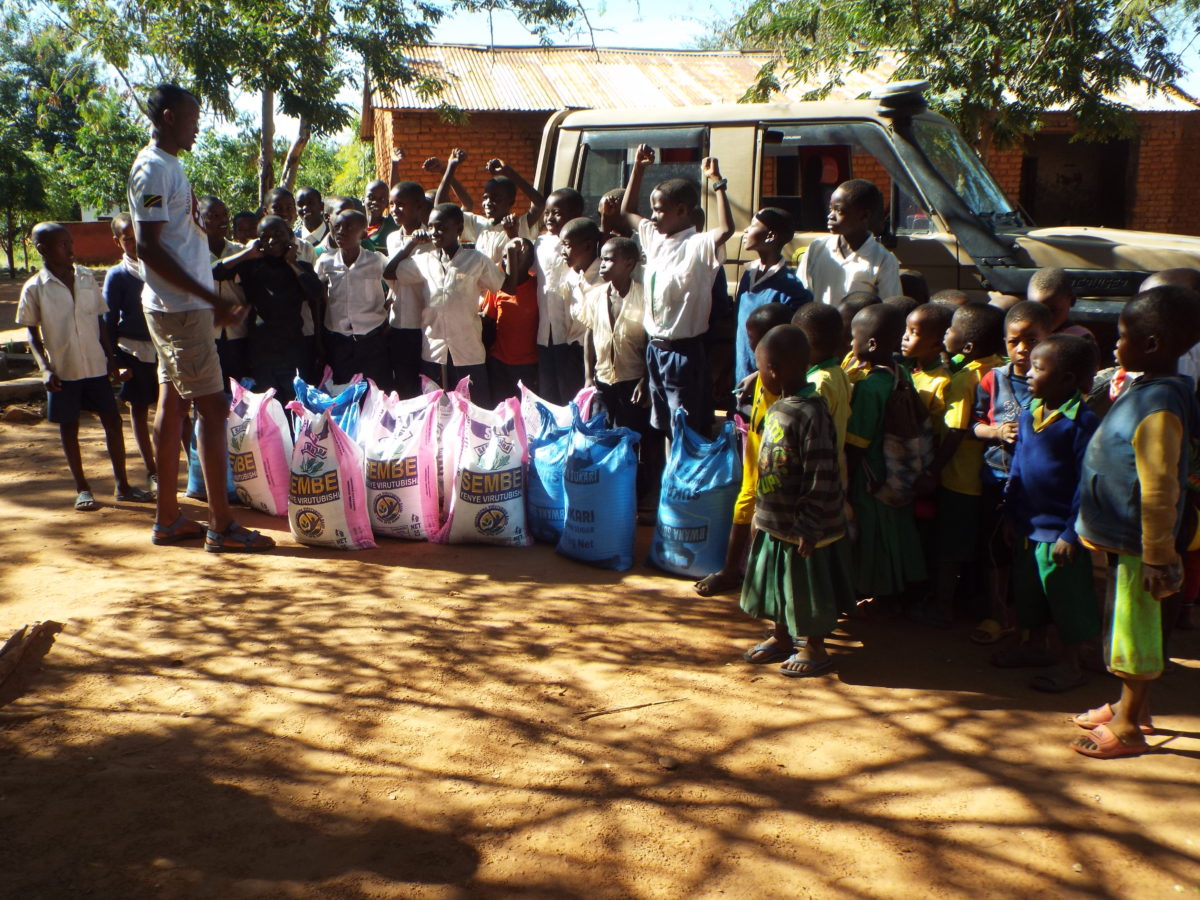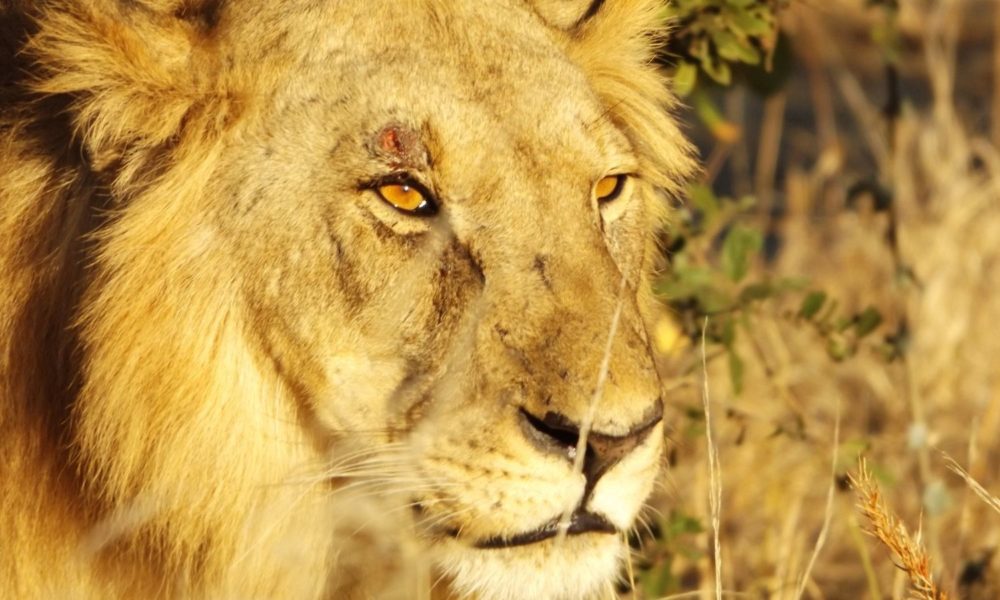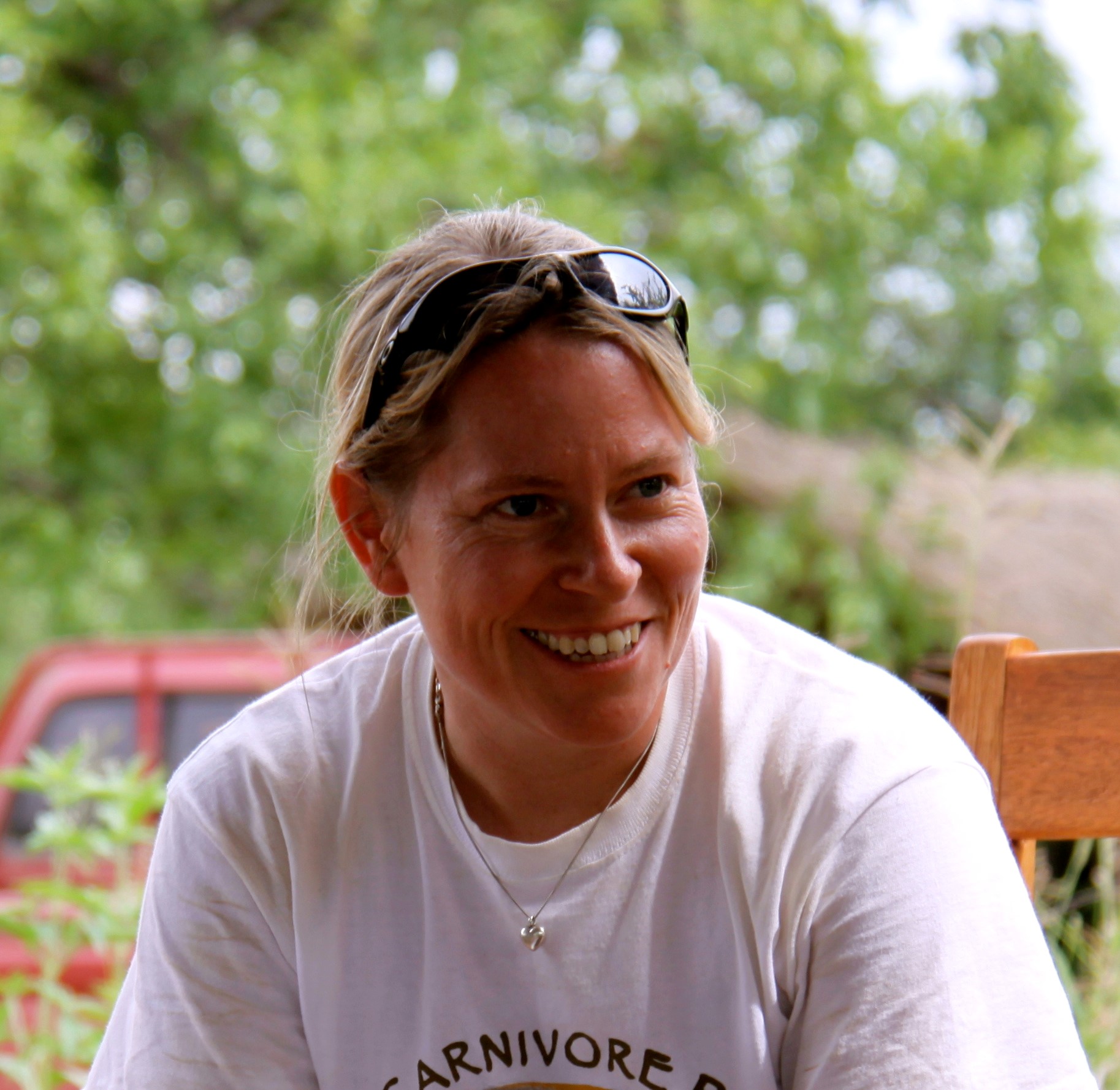Blood soaked the grass. Sunlight glinted off lethally sharp spears. Violence and danger hung heavy in the air, making fear crawl up my throat. I was on village land beside a National Park, facing the hostility of a group of young warriors butchering a cow that had been terribly injured by lions. As the director of a local carnivore conservation project, I was trying to persuade the men not to kill lions in retaliation. Their fury–both towards lions and towards me as a conservationist–was completely understandable. Lions, as hugely valued as they are internationally, posed an existential threat locally. Attacks on livestock regularly destroyed people’s livelihoods, and on occasions, destroyed people themselves. This was far from an isolated incident: human-wildlife conflict poses a major threat to both people and wildlife across the globe.

From our field camp, we saw the impacts almost daily. Ravaged livestock, desperate people, snared leopards, poisoned vultures, speared lions, habitat cleared to deter wildlife. And despite the fear and challenges of these confrontations, I knew that as a conservationist it was imperative to properly understand key threats, and work together with very different people to reduce them. In this particular case, we talked to the warriors for long enough for the light to fade, reducing the chances of retaliation and buying the lions some time. An imperfect outcome, but better than nothing.

Over time, our project grew and we became more effective at reducing conflict, working with communities and trying to generate sufficient local benefits from wildlife to outweigh the costs. Meanwhile, I married, had two children, and was spending more time in the UK and US. This seemed the perfect time to generate more support to tackle the major threat posed by conflict, and the perfect places, given the interest of the British and American public in wildlife conservation. Indeed, the further from the field I went, the louder the voices became about threats to wildlife.
Focusing on trophy hunting distracts from key conservation threats
Alarmingly, however, it soon became apparent that those voices often appeared uninformed about the real major threats to wildlife, especially conflict and habitat loss. Instead–particularly galvanised by the 2015 killing of ‘Cecil’ the lion–they seemed to focus almost exclusively on trophy hunting. Trophy hunting is a great topic for the media and campaigners: photos of hunters smiling over dead lions or elephants enrage the public, generate clicks, encourage donations to campaign groups, and enable people to feel they are having impact just by signing petitions. And they can indeed have impact. Western outrage about trophy hunting has led to widespread action, including trophy import bans or restrictions being implemented or proposed in multiple countries, with a particular focus on African species.
Unfortunately, these actions are often based on misinformation, and risk doing far more harm than good. Trophy hunting today simply isn’t a major threat to wildlife, even for species like lions, and for some species, it has directly improved their conservation. Counter-intuitive as it may seem, trophy hunting–like photo tourism–provides a financial incentive to maintain wildlife habitat and populations. More land across Africa is protected in hunting reserves than in National Parks. Hunting operators conduct anti-poaching operations, while hunting areas often act as buffers around parks, reducing hard boundaries and the intense human-wildlife conflict I had become grimly familiar with. Banning trophy hunting without better alternatives ready therefore risks amplifying the far greater threats of habitat loss, poaching, and conflict. And sadly there simply aren’t alternatives ready at scale yet: photo-tourism is unlikely to be viable in most hunting areas, while new financial models for conservation are largely untested.

Critically, trophy hunting is one of the approaches used in a legal, informed way by some of the most successful countries in the world for megafauna conservation. Sustainable use of wildlife is a central theme in the Convention on Biological Diversity, and underpins local livelihoods–often for highly vulnerable communities–right across the globe. That must not be taken lightly, particularly by privileged outsiders. Many social movements are recognising that the voices of those most affected by issues must be centered—for example, the Black Lives Matter movement and its examination of racism in all its forms. However, the trophy hunting debate has not yet arrived at the importance of centering impacted communities. The views, rights, and conservation experiences of rural Black Africans are often largely ignored, while the outrage and offence felt by Westerners are extensively considered and overly weighted, both in the media and in political decision-making. Affected local communities have spoken out–a letter representing over a million people accused campaign groups of undermining conservation and human rights by pushing hunting bans–but the lack of space and weight given to their perspectives is deeply troubling.

The conservation movement has a poor history of listening to and respecting local voices, and it is true that most trophy hunting and photo-tourism areas have benefited from a history of Westerners ignoring and excluding local people. That makes it even more imperative that we don’t repeat the same mistakes: rather than tell other countries how to manage their wildlife, we should listen to them and respect their choices. That should hold whether a country chooses to ban trophy hunting, as Kenya did in 1977, or retain it as a valuable component of their wildlife management. It is their choice, not ours. If the UK or US public dislike trophy hunting, then they should ban it domestically, not impose their views and consequences on people and wildlife elsewhere. The frustration amongst many local people is palpable, and many representatives of those communities have now made a formal complaint to the UK’s Charity Commission regarding charities harming both their livelihoods and conservation because of disinformation on this topic.
Meanwhile, the singular focus on trophy hunting draws attention away from the real threats to wildlife, such as habitat loss and poaching, and reduces immensely complicated situations down to simplistic soundbites. Furthermore, it seemed to me as if the public are being actively deceived. Most people do care about wildlife, and they believe that supporting campaigns to ban trophy hunting will reduce horrible wildlife killings. Unfortunately, the exact opposite is true. If trophy hunting is banned now, immense areas of wildlife habitat will likely transform not into National Parks, but into farms, settlements, and mines. Wildlife will go from being a valuable resource into a cost, and will be exterminated, often using poison and snares. I doubt that very many people would donate to a campaign to ban trophy hunting if they realised it would likely lead to far more–and far worse–wildlife deaths.
Speaking out about misinformation causes a backlash
Alarmed, some colleagues and I began to speak up in scientific journals and the media about these risks. Amazingly, this led to far more vitriol than I experienced when defending lions in the face of angry warriors. Now, keyboard warriors sent barrages of threats and hostility, while a misleading press release–including quotes from people as eminent as Jane Goodall–painted us as ‘so-called conservationists’ being ‘complicit in cruelty [and a] conservation disaster.’ After more than 20 years of award-winning conservation work, focused entirely on reducing wildlife killing, these attacks were disheartening and disappointing. Negative press coverage risked support for my project, and I received endless online abuse, which was often sexist and threatening.
I was again dealing with passionate people with easily understandable viewpoints. I too personally dislike trophy hunting and cannot imagine wanting to kill any animal for fun. But I believe the activists’ well-intentioned but misinformed campaigning poses an even greater threat than conflict, imperiling the conservation of vast landscapes and all the biodiversity they support. For effective conservation, evidence must count more than emotion, and local voices and rights must count more than the opinions of onlookers.
Trophy hunting is far from optimal, and can have negative impacts on wildlife populations, particularly when quotas are too high. Far from shying away from that, I frequently mention problems with trophy hunting, and my own research highlights negative impacts on species such as leopards. However, I still recognise that without better options ready at scale, it currently helps incentivise conservation across huge areas, and just as with our delaying tactics above, that imperfect outcome is much better than nothing.
Conservationists must not shy away from openly tackling real challenges
People often ask why I speak out despite all the hatred and abuse. But I still believe that conservationists must not shy away from openly tackling real challenges. We should not only conduct good science, but we should strive to communicate it to the public and politicians so that decisions can be informed by the best available evidence. Presumably all scientists would agree that science denial and disinformation campaigns are harmful–but we must go a step further and actively call it out, even when it is uncomfortable to do so. That is the case here.
If trophy hunting is banned without proper consideration, people will be disempowered, conservation will be harmed, and far more animals will die appalling deaths. Those deaths will be largely invisible–there will be no media fanfare or campaigning–but their impacts will be profound. More blood will soak the grass, this time of snared, speared and poisoned wildlife. And this time it will be on the hands of those who enabled it, or who were silent when they saw the risks. I will not have that blood on mine.


